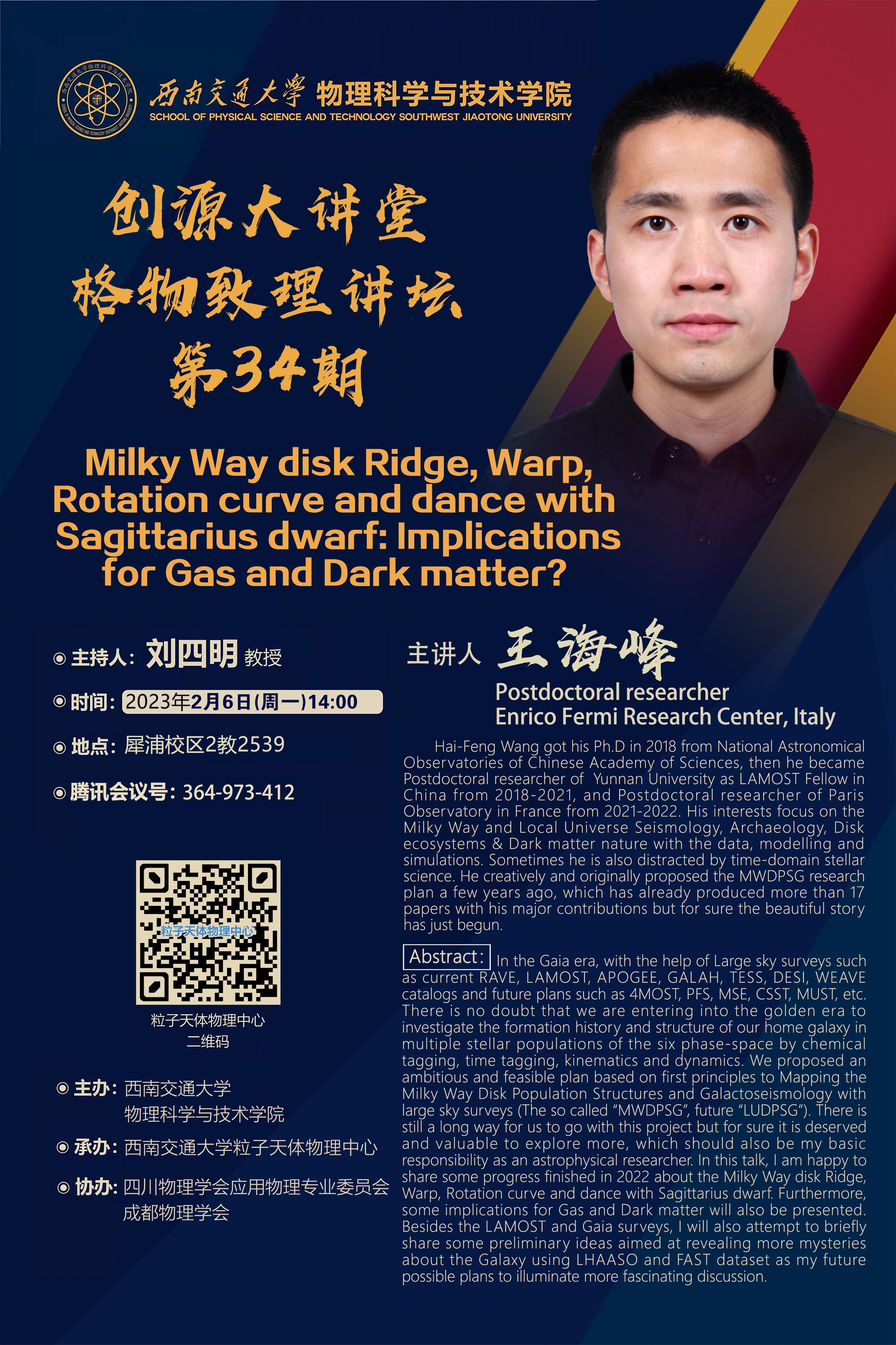主持人:刘四明教授
时间:2023年2月6日(周一)14:00
地点:犀浦校区2教2539
腾讯会议号:364-973-412
题目:Milky Way disk Ridge, Warp, Rotation curve and dance with Sagittarius dwarf: Implications for Gas and Dark matter?
主讲人:王海峰Postdoctoral researcher
Enrico Fermi Research Center,Italy
Hai-Feng Wang got his Ph.D in 2018 from National Astronomical Observatories of Chinese Academy of Sciences, then he became Postdoctoral researcher of Yunnan University as LAMOST Fellow in China from 2018-2021, and Postdoctoral researcher of Paris Observatory in France from 2021-2022. His interests focus on the Milky Way and Local Universe Seismology, Archaeology, Disk ecosystems & Dark matter nature with the data, modelling and simulations. Sometimes he is also distracted by time-domain stellar science. He creatively and originally proposed the MWDPSG research plan a few years ago, which has already produced more than 17 papers with his major contributions but for sure the beautiful story has just begun.
Abstract:
In the Gaia era, with the help of Large sky surveys such as current RAVE, LAMOST, APOGEE, GALAH, TESS, DESI, WEAVE catalogs and future plans such as 4MOST, PFS, MSE, CSST, MUST, etc. There is no doubt that we are entering into the golden era to investigate the formation history and structure of our home galaxy in multiple stellar populations of the six phase-space by chemical tagging, time tagging, kinematics and dynamics. We proposed an ambitious and feasible plan based on first principles to Mapping the Milky Way Disk Population Structures and Galactoseismology with large sky surveys (The so called “MWDPSG”, future “LUDPSG”). There is still a long way for us to go with this project but for sure it is deserved and valuable to explore more, which should also be my basic responsibility as an astrophysical researcher. In this talk, I am happy to share some progress finished in 2022 about the Milky Way disk Ridge, Warp, Rotation curve and dance with Sagittarius dwarf. Furthermore, some implications for Gas and Dark matter will also be presented. Besides the LAMOST and Gaia surveys, I will also attempt to briefly share some preliminary ideas aimed at revealing more mysteries about the Galaxy using LHAASO and FAST dataset as my future possible plans to illuminate more fascinating discussion.




